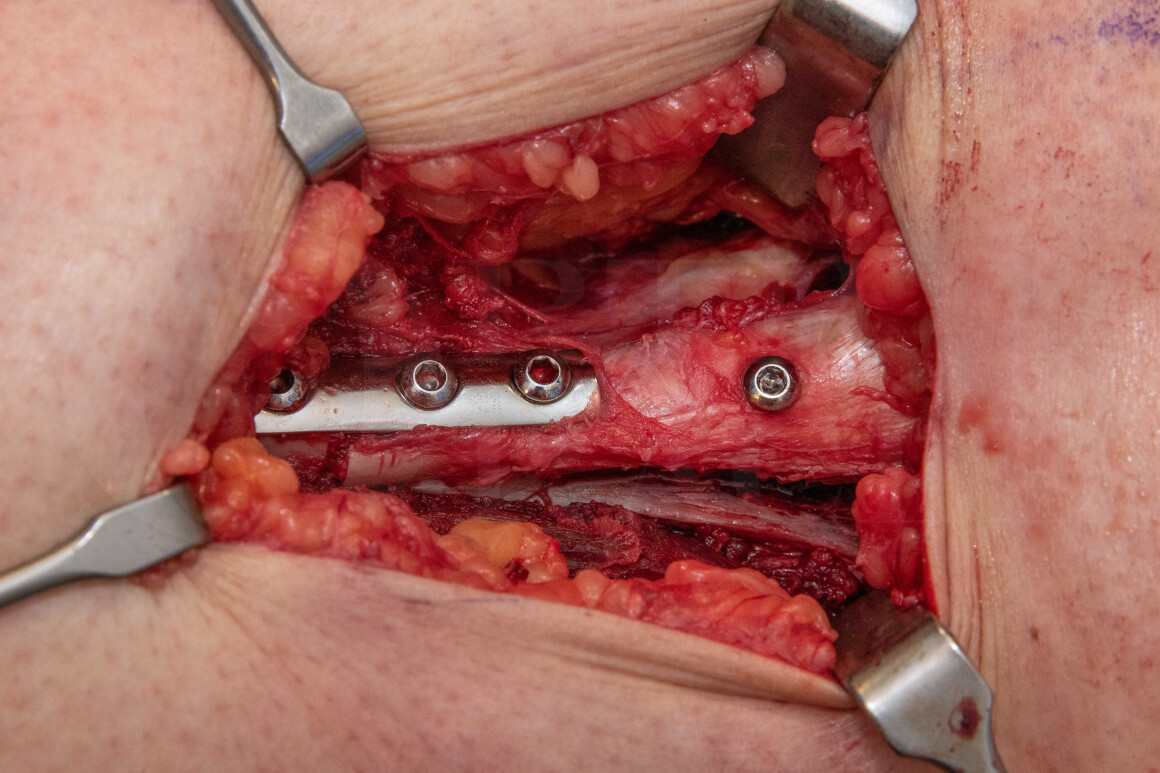Tibial tubercle osteotomy with small fragment plate fixation
Overview

Subscribe to get full access to this operation and the extensive Knee Surgery Atlas.
Learn the Tibial tubercle osteotomy with small fragment plate fixation surgical technique with step by step instructions on OrthOracle. Our e-learning platform contains high resolution images and a certified CME of the Tibial tubercle osteotomy with small fragment plate fixation surgical procedure.
There are a number of indications for tibial tubercle osteotomy (TTO), and its best to consider these indications discreetly as either being in the “native” knee, or alternatively the arthroplasty setting.
In the native knee, this is either in the patella with recurrent instability secondary to patella alta or in the patella that has chondral damage secondary to a maltracking or overload due to excessive patella alta or lateral tracking. This overload may be symptomatically expressed as patella tendonopathy and TTO with distalisation may be also used in cases of resistant patella tenodinopathy, where the patella is too high.
In the knee arthroplasty setting TTO has two main indications – either as an additional step during exposure to reduce the risk of patella tendon avulsion in a stiff knee, or as a way to modify patellofemoral joint line eg excessive patella baja that requires proximalisation during or after a revision TKA. This TTO with proximalisation is performed with open arthrolysis of stiff revision knee replacement and a significant proximalisation can be accommodated with this small fragment plate fixation technique which would not have been the case with mores standard screw fixation osteosynthesis.
Please remember that in the native knee particularly no patient should undergo surgery until non-operative management has been exhausted with careful attention to the whole lower limb kinetic chain. The commonest problem is poor Gluteal recruitment and pelvic “dipping”, and no patella realignment will work well underneath a dipping pelvis.
The non-operative interventions to be explored are covered in the indications section. There are a number of operations for patella stabilization which have been used over the years, although more recently realignment of the patella with a tibial tubercle osteotomy (TTO) most commonly to distalise and medalise sometime used with reconstruction of the medial patellofemoral ligament (MPFL) have become the most popular. Sometimes these are used together and occasionally there is a need for Vastus Medialis advancement (as described by Insall) in addition.
Combining the TTO and the medial patellofemoral ligament (MPFL) reconstruction poses potential problems for incision placement, but my strategy is to use a single anterior longitudinal incision allowing for both the TTO and the hamstring harvest, but with a longer incision than normally used for performing an isolated TTO. This technique is previously described on OrthOracle : Patella stabilisation : Tibial tubercle osteotomy and Medial patellofemoral ligament reconstruction
OrthOracle readers will also find the following instructional techniques of interest:
Femoral trochlea chondral lesion: Chondrogide membrane(Geistlich pharma) for chondral regeneration.
Patella stabilisation: Rotational proximal tibial Osteotomy
Anteromedialisation tibial tubercle osteotomy
High Tibial Osteotomy (Synthes Tomofix plate)
Proximal Tibial Osteotomy using a Newclip plate.
Author: James Murray FRCS (Tr & Orth)
Institution: The Avon Orthopaedic centre, Southmead Hospital, Bristol, UK.
Clinicians should seek clarification on whether any implant demonstrated is licensed for use in their own country.
In the USA contact: fda.gov
In the UK contact: gov.uk
In the EU contact: ema.europa.eu



















